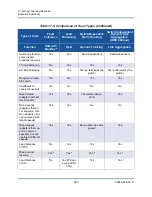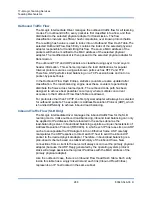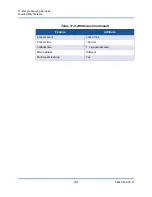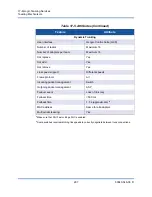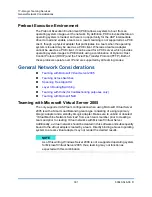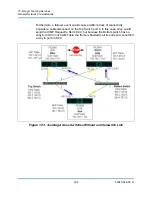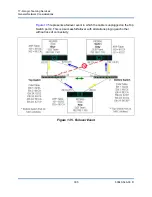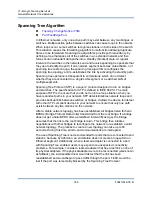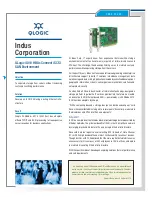
17–QLogic Teaming Services
Teaming Mechanisms
291
83840-546-00 D
Network Communications
The following are the key attributes of SLB:
Failover mechanism – Link loss detection.
Load Balancing Algorithm – Inbound and outbound traffic are balanced
through a QLogic proprietary mechanism based on L4 flows.
Outbound Load Balancing using MAC Address - No.
Outbound Load Balancing using IP Address - Yes
Multivendor Teaming – Supported (must include at least one QLogic
Ethernet adapter as a team member).
Applications
The SLB algorithm is most appropriate in home and small business environments
where cost is a concern or with commodity switching equipment. SLB teaming
works with unmanaged Layer 2 switches and is a cost-effective way of getting
redundancy and link aggregation at the server. Smart Load Balancing also
supports teaming physical adapters with differing link capabilities. In addition, SLB
is recommended when switch fault tolerance with teaming is required.
Configuration Recommendations
SLB supports connecting the teamed ports to hubs and switches if they are on the
same broadcast domain. It does not support connecting to a router or Layer 3
switches because the ports must be on the same subnet.
Switch-Dependent
Generic Static Trunking
This mode supports a variety of environments where the adapter link partners are
statically configured to support a proprietary trunking mechanism. This mode
could be used to support Lucent’s
Open Trunk
, Cisco’s
Fast EtherChannel
(FEC),
and Cisco’s
Gigabit EtherChannel
(GEC). In the static mode, as in generic link
aggregation, the switch administrator needs to assign the ports to the team, and
this assignment cannot be altered by the ASP, as there is no exchange of the Link
Aggregation Control Protocol (LACP) frame.
With this mode, all adapters in the team are configured to receive packets for the
same MAC address. Trunking operates on Layer 2 addresses and supports load
balancing and failover for both inbound and outbound traffic. The ASP driver
determines the load-balancing scheme for outbound packets, using Layer 4
protocols previously discussed, whereas the team link partner determines the
load-balancing scheme for inbound packets.
Summary of Contents for 8400 Series
Page 390: ......







